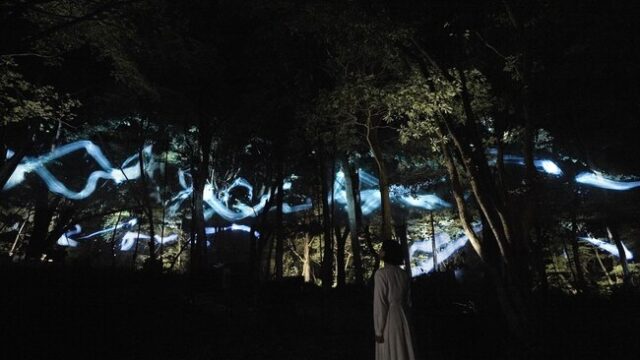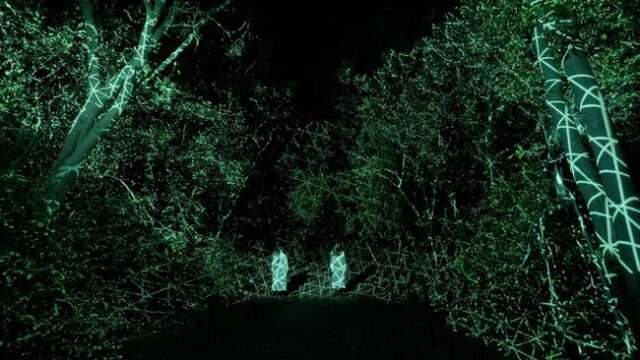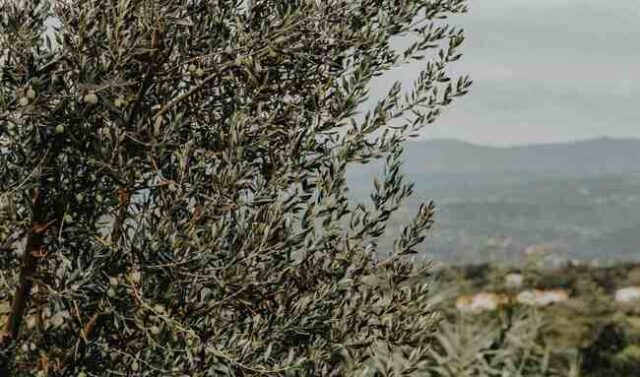
A recent incident at Carlsbad Caverns National Park underscores the delicate balance of cave ecosystems and the unforeseen consequences human actions can have. In early September 2024, a visitor inadvertently dropped an unfinished bag of Cheetos in North America’s largest cave, known as “The Big Room.” What may have seemed like a harmless mistake led to a “world-changing” event within the cave’s ecosystem, according to the park’s staff. The cheesy snack, softened by the cave’s humid conditions, became a source of nutrients Continue reading “Tourist Causes a “World Changing” Event by Dropping Cheetos Into North America’s Largest Cave” »

Japanese forests and rice terraces have been transformed into magical, multicolored dreamscapes through the innovative work of the art collective teamLab. Their recent project, Hidden Traces of Rice Terraces, brings life to the rugged Izura coastal region of Japan’s Ibaraki Prefecture, creating an immersive experience for art and nature enthusiasts alike. This breathtaking exhibition highlights the region’s concealed rice terraces and ancient forests through a vivid display of color and light, made possible by digital technology. Part of teamLab’s Digitized Nature initiative, the project aims to blend art with the natural world, emphasizing the continuity of life and time. By doing so, they create a space where the boundaries between nature and technology dissolve, allowing visitors to experience nature in a new and surreal way.

Without altering the landscape, teamLab uses light projections to illuminate the natural beauty of the forests and terraces, creating an otherworldly experience. Trees glow brilliantly, while lanterns gently float on the water, casting a soft, magical glow over the scene. These multicolored dreamscapes offer a mesmerizing contrast to the untouched natural surroundings, drawing visitors into a peaceful, almost mystical atmosphere. The exhibition, Hidden Traces of Rice Terraces, opens on September 30 in Japan, offering a rare chance for those in the area to witness this blend of art and nature.











A heartwarming trend has taken social media by storm, where mothers are leaving gift cards and notes hidden in diaper aisles to support their postpartum peers. This movement started when Nashville mom, Denaesha Gonzalez, noticed a purse left behind in a Target baby aisle. She reasoned that a mother likely sacrificed her desires to provide for her baby, Continue reading “Trending Moms are Leaving Gift Cards in Store Diaper Aisles–For Postpartum Peer Relief” »

The PetSnowy SMILE Dryer Box is a game-changer for pet parents seeking a stress-free bath time experience. Instead of battling a wet, hyperactive pet running through the house, this all-in-one drying solution offers a comfortable and efficient alternative. Pets sit in a cozy, transparent box, enjoying a gentle airflow that dries them without the noise or heat of a traditional blow dryer. The Dual Brushless Crossflow Drying System ensures steady airflow from the bottom, reducing drying time and preventing fur tangles. Designed for safety and comfort, the transparent glass casing allows pets to stay calm by seeing their surroundings, and the shock-proof, ventilated design makes it a secure and peaceful environment for them to dry off.

Packed with innovative features, the PetSnowy SMILE goes beyond drying to provide a spa-like grooming experience. Advanced Negative Ion Technology makes fur softer, and fluffier and reduces shedding, leaving your pet looking and feeling their best. The dryer is easy to use with its dual LCD screens displaying real-time drying progress, temperature, and wind speed, and it even offers app support for remote control. This dryer box not only saves time and hassle for pet owners but also creates a comfortable and enjoyable post-bath experience for pets. At $489, it’s a worthy investment for those seeking a cleaner home and happier, fluffier pets.






Spain’s olive oil producers are revolutionizing the use of olive pits, transforming them from a byproduct into a valuable resource for biofuel. In addition to producing half of the European Union’s olive oil, Spain started using hundreds of thousands of tons of olive pits to power homes, mills, and even airplanes. These pits, which account for up to 10% of an olive crop’s weight, are extracted during oil Continue reading “Spain’s Olive Oil Producers Turn Tons of Their Pits into Fuel–For Homes, Planes and Industry” »

Ursula Bannister, a 79-year-old hiker, faced an unexpected crisis while descending from High Rock Lookout near Ashford, Washington. After scattering flowers in memory of her mother, Bannister caught her foot in a hole, causing a severe fall that left her leg broken and twisted. In pain and stranded on the steep trail, she called out for help. Luckily, three young hikers, including 20-year-old Air Force airman Troy May, heard her cries. Despite being told by search and rescue that it would take five hours to arrive, May sprang into action, determined to assist Bannister immediately. With no painkillers or medical supplies available, May carried her down the trail himself.

Gently lifting Bannister onto his back, May began the arduous journey downhill, carrying her for the majority of the remaining 1.8 miles. His friend, Layton Allen, helped with the final stretch, while other passersby, including an occupational therapist and a physical therapist, provided guidance and support. Along the way, the hikers engaged Bannister in conversation to distract her from the pain, and she shared stories of her life. At the trailhead, Bannister was rushed to Tacoma General Hospital where doctors treated her severe leg injuries. Bannister expressed immense gratitude for her rescuers, saying their selflessness and kindness formed a lasting friendship worth more than the discomfort she endured.

The HC1 Breeze by Happier Camper offers an appealing, budget-friendly option for adventurers who love retro design and modular functionality. Priced under $30K, the trailer provides a lightweight, customizable interior and a sleek exterior, making it both stylish and practical. Its Venice Breeze color scheme, combined with its compact 13.5-foot frame and 1100-pound dry weight, allows for easy towing by most vehicles, and its adaptability makes it ideal for varied travel needs. The trailer’s fiberglass shell ensures durability, while its design reflects mid-century modern aesthetics, perfect for those who value a vintage vibe. Continue reading “Budget-Friendly Trailer Under $30K Offers Lightweight Modular Interior Setup With Retro Design” »

Tran Long Ho, a Vietnamese inventor and YouTuber from the Mr Ho Thanh Che channel, has captivated the internet with his latest creation: a UFO-shaped jet boat built entirely from scratch. In a viral video, Ho showcases the entire process of designing and constructing the boat, which mirrors the iconic flying saucer Continue reading “Man Builds UFO-Shaped Jet Boat From Scratch and Drives It on a River” »

Astronomers have unveiled the most detailed infrared map of the Milky Way, thanks to over 200,000 images captured by ESO’s VISTA telescope in Chile. This groundbreaking map offers new insights into hidden parts of our galaxy, revealing areas previously obscured by dust and gas. The VISTA telescope, equipped with the infrared-sensitive VIRCAM, has been used to map vast regions of the sky, allowing scientists to peer through the cosmic dust and uncover parts of the galaxy that are inaccessible to visible light. The detailed map offers a new perspective on the structure of the Milky Way, enriching our understanding of its composition and the processes occurring within it.

Led by astrophysicist Dante Minniti, the project has transformed the way astronomers view the Milky Way. The new map, which contains ten times more objects than the previous version released in 2012, is based on observations from 2010 to 2023. During this time, the VISTA telescope collected data on the movements and brightness changes of objects across 420 nights of observations. The map’s impact has been so profound that it has already contributed to over 300 scientific papers. This wealth of data is expected to fuel further research for years, offering unprecedented access to the inner workings of our galaxy through the ESO Science Portal.


















































